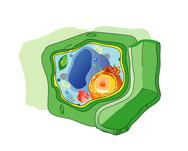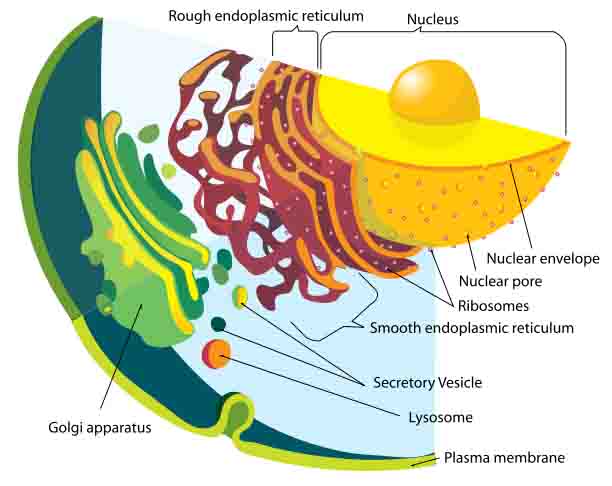 | ||||
Plant Cell Parts, Functions & Diagrams - P2
Image of generic plant celll. Click here for a labeled diagram of this cell.
Page last updated: 1/2016
SPO VIRTUAL CLASSROOMS
VIDEO: How to Make a Wet Mount Slide of Onion Plant Cells
Structures Shared by Most Eukaryotic Cells
The presence of membrane-bound organelles is a defining characteristic of eukaryotic cells. Organelles, which are enclosed by the same type of material as the plasma membrane, divide the cell into different functional areas.
The Virtual Cell Biology Classroom provides a wide range of free educational resources including Power Point Lectures, Study Guides, Review Questions and Practice Test Questions.
PAGE 2 < Back to Page 1
The following are components of the endomembrane system of eukaryotic cells.
- Nucleus: Bound by a double-layer nuclear membrane, the nucleus contains the genetic material (the genome) of the cell. It is also filled with fluid, called nucleoplasm and may contain one or more nucleoli--regions where ribonucleic acid (RNA) and ribosomes, the protein making machinery of the cell, are synthesized.
- Endoplasmic reticulum: This network of hollow tubes extends off the nuclear membrane, and comes in two forms; rough endoplasmic reticulum, which is studded with ribosomes and produces protein molecules and smooth endoplasmic reticulum, which has no ribosomes, and is involved in making and transporting of lipids.
- Vesicles: These small shipping organelles are spheres of membrane that break off from the plasma membrane or from membrane-bound organelles to ship materials into, out of, or within the cell.
- Lysosomes: This special type of vesicle contains enzymes that can break down organic materials. Lysosomes are produced by the Golgi apparatus and function in cellular digestion as well as recycling broken cellular components.
- Peroxisomes: These vesicles, derived from the endoplasmic reticulum, contain enzymes that break down free radicals and hydrogen peroxide that can be dangerous to the cell.
- Golgi body: In addition to making lysosmes, the Golgi body (also known as the Golgi apparatus) packages and ships materials out of the cell.
- Plasma membrane: This membrane—made mainly of phospholipids, proteins and sterols—is found in all eukaryotic cells, and serves as a barrier between the inside and the outside of the cell.



